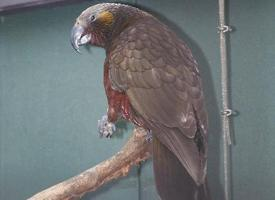
Váhy a míry
| Délka | od 10 do 15 cm |
|---|
Popis zvířete
The Giant African Snail, scientifically known as Achatina achatina, is a remarkable creature that boasts an impressive size, making it one of the largest terrestrial mollusks in the world. Originating from the forests of West Africa, this species has adapted to a variety of environments, showcasing its resilience and versatility. The snail's most striking feature is undoubtedly its shell, which can grow up to 30 centimeters in length and 7.5 centimeters in diameter, although the average size is typically around 20 centimeters. The shell is conical in shape, adorned with beautiful patterns that include a range of colors from brown to creamy white, with vertical stripes that add to its aesthetic appeal.The body of the Giant African Snail is equally fascinating, with a soft, muscular foot that exudes a slimy substance, allowing it to glide smoothly over surfaces. This mucus plays a crucial role in the snail's mobility and also serves as a protective barrier, keeping the snail's soft tissues moist and safe from external harm. The snail's head bears two pairs of tentacles; the longer pair houses the eyes at the tips, while the shorter pair is used for tactile and olfactory purposes, helping the snail navigate its environment and locate food.
Giant African Snails are known for their voracious appetite and herbivorous diet, feeding on a wide variety of plants, fruits, and vegetables. This, combined with their ability to reproduce rapidly and in large numbers, has led to their classification as an invasive species in many parts of the world. Each snail is capable of producing up to 1,200 eggs per year, leading to significant agricultural damage in areas where they are not native and have no natural predators.
In their natural habitat, these snails play an essential role in the ecosystem, acting as decomposers by feeding on dead plant material and recycling nutrients back into the soil. They are also a source of food for various predators, including birds, small mammals, and even humans in certain cultures where they are considered a delicacy and an important source of protein.
Despite their ecological benefits, Giant African Snails face threats from habitat loss and the pet trade. Their intriguing appearance and size make them appealing as exotic pets, but their care requires specific conditions that mimic their natural environment, including high humidity and a diet rich in calcium for shell development.
In conclusion, the Giant African Snail is a fascinating creature with a unique set of characteristics that have allowed it to thrive in diverse environments. However, its impact on ecosystems outside its native range highlights the importance of responsible pet ownership and the need for stringent measures to control its spread in non-native areas. As we continue to study and understand the complexities of this species, it serves as a reminder of the delicate balance within ecosystems and the far-reaching effects of human activity on the natural world.
Podobná zvířata
Nové fotografie zvířat
Top 10 zvířat
- Dolphin gull (Leucophaeus scoresbii)
- Diana monkey (Cercopithecus diana)
- Moustached guenon (Cercopithecus cephus)
- Galápagos tortoise (Geochelone nigra complex)
- Stone loach (Barbatula barbatula)
- Japanese macaque (Macaca fuscata)
- Russian tortoise (Testudo horsfieldii)
- Greek tortoise (Testudo graeca)
- Common flying dragon (Draco volans)
- Vendace (Coregonus albula)


